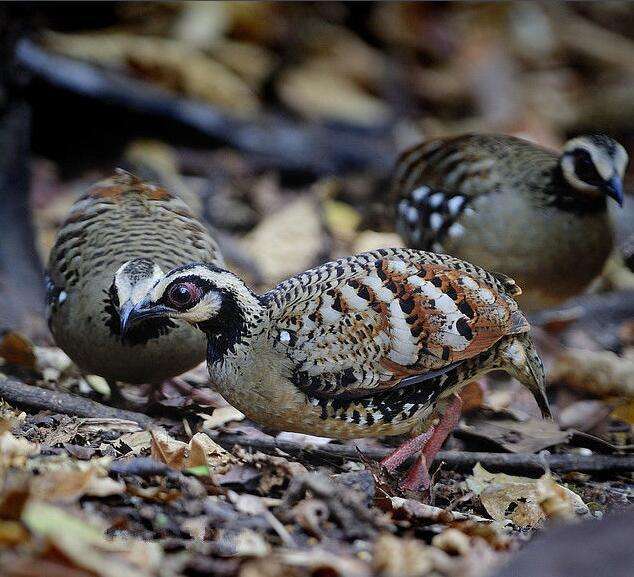Arborophila brunneopectus
IUCN
LCBasic Information
Scientific classification
- name:Arborophila brunneopectus
- Scientific Name:Arborophila brunneopectus
- Outline:Landfowl
- Family:Chickeniformes Pheasants Arborophila
Vital signs
- length:22-30cm
- Weight:220-363
- lifetime:About 20 years
Feature
Quiet and hidden
Distribution and Habitat
It is found in northeast India, Myanmar, Thailand, Laos, Vietnam and Indonesia, and in Yunnan, Guizhou and Guangxi in China.
It inhabits evergreen broad-leaved forests in the low mountains below 1500 meters above sea level, and is also found in bamboo forests and thickets in the low hills and the plain at the foot of the mountains, but prefers evergreen forests.
Appearance
Arborophidges are both male and female. The forehead is yellow, the crown olive brown; The tip of each feather is black, forming a black spot on the top of the head, and sometimes the black spots combine to make the whole head black; The occipital area is usually darker than the crown of the head. A broad white or yellowish brow line runs from the forehead up the eyes to the occipital area, then curves down the side of the neck and is lighter on the neck. Black eye first and neck side; The cheeks and ears are white. Back, waist and tail covered with bright olive, with thick black markings; Tail olive brown, with black spots; Shoulder, wing cover and medial secondary cover chestnut, with brown spots near tip; Lateral secondary plumage brown, with black drop or transverse spots, and large pale olive brown oval spots; Primary feathers brown, with broad brown fringes, gradually turning inward to maroon. Chin, throat white or yellowish-white; The forehead is sparsely covered with black feat
Details
Brown-breasted Hill Partridge has three subspecies.

Arborophila brown breast temperament is relatively quiet, also good at hiding, generally difficult to find. The call is a monotonous guttural sound, developed into a high and low whistle ti-hu, ti-hu, ti-hu... Audio volume unchanged. kew, kew, kew... The cry. It mainly feeds on plant seeds and fruits, but also eats orthoptera, Coleoptera and other insects and snails.
The breeding period is from April to June, and the nest is built on the underforest ground in the mountain forest between 1500 and 4000 meters above sea level, using natural pits in the ground or by the female bird to dig a small pit in the ground. The nest is often surrounded by lush shrubs or understory vegetation, which is not easy to see, but sometimes the nest is built in the understory vegetation is sparser and not very hidden. Artridges lay about 4 eggs per litter and are 36.8-37.6×28.4-28.5 mm in size.
Arboridge has a wide distribution range, does not approach the vulnerable endangered critical value criteria for species survival (distribution area or fluctuation range is less than 20,000 square kilometers, habitat quality, population size, distribution area fragmentation), and population trend is stable, so it is evaluated as a species without survival crisis. In China, the distribution area is narrow and the number is rare, and the named subspecies was listed in the list of terrestrial wildlife by the State Forestry Administration of China in 2000. It is an endemic resident bird, distributed in southwestern and southern Yunnan and Guangxi.
Listed in the International Union for Conservation of Nature Red List of Threatened Species (IUCN) for 2016 ver 3.1 - Not Threatened (LC).
Listed in China's "National Key Protected Wildlife List" (February 5, 2021) Level 2.
Protect wild animals and eliminate wild meat.
Maintaining ecological balance is everyone's responsibility!








